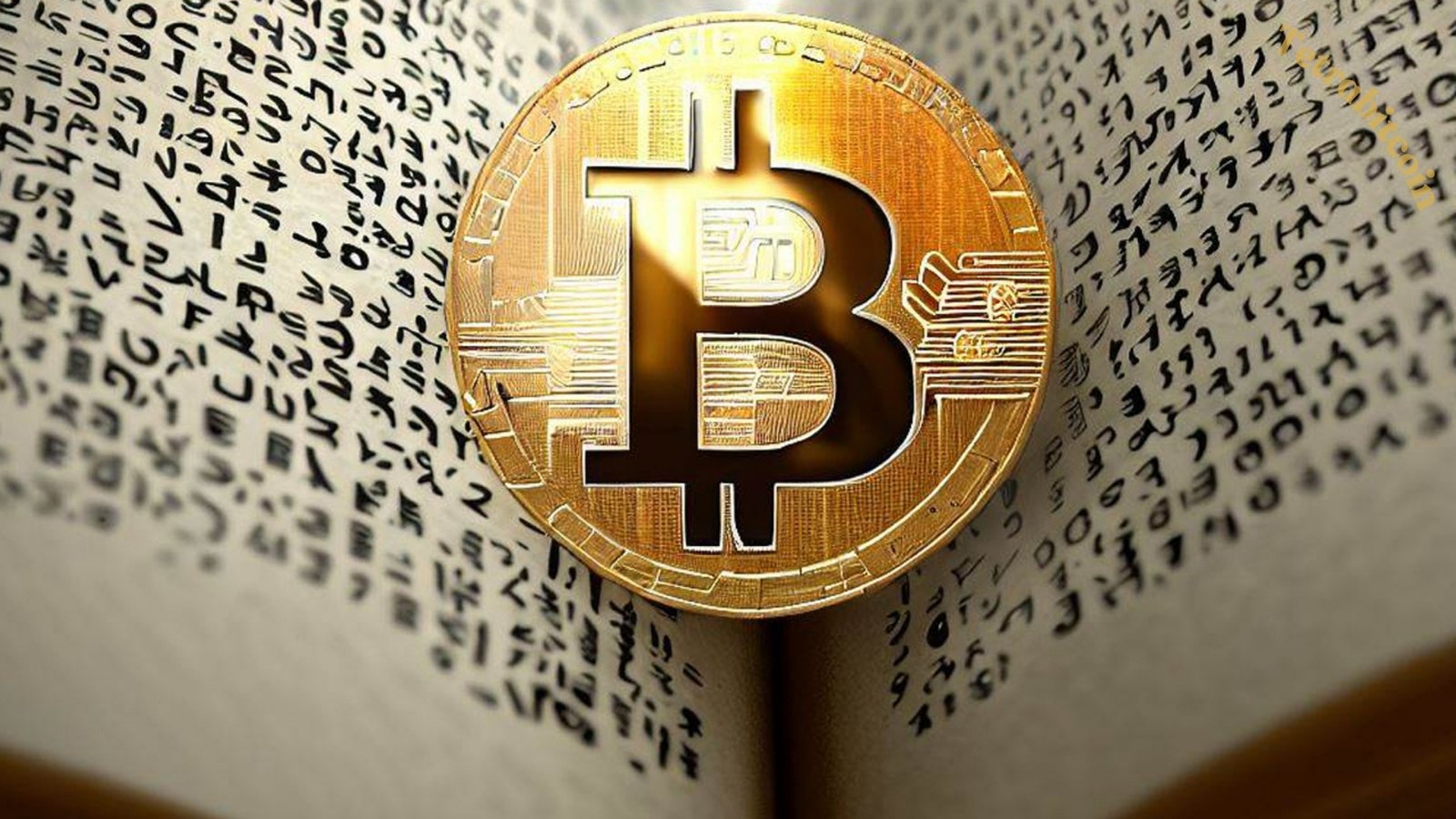What are Bitcoin Ordinals? A Complete Guide 2024. The world’s most well-known digital assets are NFTs or non-fungible tokens. Most have been developed and implemented on Solana, Ethereum, and BNB Smart Chain. Curiously, the Bitcoin Ordinals whitepaper laid the groundwork for implementing NFTs on the Bitcoin network, the oldest blockchain in the world. Bitcoin applications’ code cannot be modified due to Bitcoin’s technological design.
A decentralized network of developers and nodes ensures the Bitcoin network’s security. So, no concrete project ever came out of the idea of Bitcoin NFTs. More and more options to create Bitcoin NFTs have arisen as a result of the growth of the crypto ecosystem. Learn more about Bitcoin Ordinals and their inner workings in the following discussion.
Definition of Bitcoin Ordinals
Recently, Bitcoin Ordinals has been one of the most talked-about developments in the web3 sphere. When Casey Rodarmor unveiled the proposal in January 2023, it sparked heated debate among cryptocurrency enthusiasts. Could you please explain the ordinals protocol and its key points? Minted and embedded with a distinct piece of data, Bitcoin Ordinals are the basic units of Bitcoin, satoshis, or sats.
Consequently, satoshis can acquire an identity similar to a fundamental non-fungible token and become truly unique. How can the smallest Bitcoin amount be used to add digital assets such as text, photos, or videos? Inscription on Bitcoin is made possible by the protocol, and the response hints at its operation.
Resources to educate oneself on Bitcoin’s uses and the underlying technology have been in high demand recently. The worlds of crypto and web3 are about to see the rise of Bitcoin Ordinals. The record for daily inscriptions using Ordinals was broken four times in April 2023 due to increasing network activity. Users uploaded lots of pictures, videos, and games to the network.
What is an Inscription?

An often-cited feature of the Bitcoin protocol can be better understood with the help of the definition of Bitcoin Ordinals. Using ordinals, a digital asset can be “printed” onto the smallest Bitcoin denomination, Satoshi. Smart contracts, which can aid in expressing NFTs, can also be a part of the data you can inscribe on Bitcoin. Consequently, Bitcoin NFTs can be created by inscription. The Taproot upgrade, implemented on the Bitcoin network in November 2021, significantly benefited satoshi inscription.
The Bitcoin team has been working tirelessly to integrate NFTs into the network. Counterparty in 2014 and Stacks in 2017 were among the first attempts to incorporate non-fungible tokens into Bitcoin. Data saved in the witness of Bitcoin transactions can mainly be engraved during the inscription procedure. With the 2017 SegWit upgrade, the witness feature was introduced to the Bitcoin network.
The Rationale Behind Creating Bitcoin Ordinals
Their work should also be the center of attention in the Bitcoin Ordinals introductory guide. Remember, Bitcoin Ordinals were born in the Bitcoin community’s traditional arguments.
Suppose Bitcoin were to replace all other currencies as the de facto standard. A worldwide financial network would be the sole product of this, leaving no room for experimental use cases like data inscribing in block space. One way to fix Bitcoin’s security budget issue is to employ more block space for storage.
In its early stages, Bitcoin’s OP_RETURN function was the only way to encode messages onto blocks, limiting the available capacity to about 80 bytes. But that feature wasn’t enough to make the Ordinals NFTs that we’ll discuss today. Two significant hard fork upgrades, Taproot and SegWit, raised the size limit to 4 MB. These upgrades brought about massive improvements. The enhancements made it possible to efficiently organize transaction data by providing a novel method for measuring block size.
Working of Ordinals
There are four separate variables linked to a satoshi’s location on the Bitcoin blockchain, according to developer Casey Rodarmor. There are four parameters: the block’s satoshi index, the cycle number, the block’s index during the challenging adjustment phase, and the block’s index during the halving era. Finding the sweet spot between these parameters will teach you all you need to know about how Bitcoin Ordinals work.
A satoshi’s position on the Bitcoin blockchain may be determined using these four factors; obviously, the first satoshi is rarer. Rare mints may be able to command a premium price from NFT collectors. Consequently, one way to confirm the rarity of a Bitcoin NFT is to use the ordinal ranking of sats.
Repurposing and using the code as envelopes for the data imprinted on satoshis is also integral to how Bitcoin Ordinals work. The Ordinals protocol can assist in staking more extensive data on satoshis when Bitcoin’s block size limit is increased. Users can mint CryptoPunk on Bitcoin using a satoshi, for instance.
Ordinals are like two identical bills of equal value, but one has Michael Jordan’s and LeBron James’s signatures on it. Keep in mind that you can purchase a similar item with both bills. The opposite is true regarding the social status of currency bills featuring the signatures of well-known celebrities.
What is the Special Highlight of Ordinal Inscriptions?
Bitcoin Ordinals are typically described as non-fungible tokens, a prevalent theme in most Bitcoin introductions. A decentralized file storage system called the Interplanetary File System (IPFS) was used to store the NFTs on Ethereum as references to data that was not directly stored on the blockchain. Casey Rodarmor developed the Ordinals Wallet and the NFT protocol by concentrating on the capability to modify NFT metadata. According to him, non-fungible tokens are missing something important: off-chain data. Alternatively, Ordinals are entire digital assets because their data is recorded on-chain.
In contrast to Bitcoin NFTs, Bitcoin Ordinals are digital artefacts, according to Rodarmor. To add insult to injury, creator royalties are not an option for digital artefacts like Ordinals. Everything occurs on the Bitcoin blockchain, so Ordinal Inscriptions doesn’t rely on other tokens or sidechains.
By thinking about how Ordinal Inscriptions function, you can understand how Ordinals vary from NFTs. A specific Bitcoin transaction stores the inscriptions in taproot script-path spend scripts. Making the taproot output with the inscription content and spending it are the two easy stages of constructing an inscription.
Unique Traits of Bitcoin Ordinals
One of the fundamental guidelines in an introduction to Ordinals is to avoid confusing Bitcoin Ordinals with non-fungible tokens. Ordinals differ from NFTs in several respects, and you should know them. The ability to imprint one-of-a-kind data and smart contracts on the Bitcoin network satoshi has brought the phrase “Ordinals NFT” into the spotlight. Some of the most striking differences between Bitcoin Ordinals and NFTs are as follows.
On-chain Minting
The fact that the Bitcoin blockchain stores accurate raw file data is the primary argument in favor of Ordinals being considered apart from NFTs. Ethereum and other non-fungible token networks store the files as reference points, which can be hosted anywhere. Using a gallery as an example, NFTs can refer to a physical art piece for sale.
Inscription vs. Tokenization
An inscription is the primary distinction between NFTs and Bitcoin Ordinals. Since Bitcoin Ordinals include distinct data like audio, video, and text files, some would think they are NFTs. On the other hand, Ordinals holds the file data with direct inscription on the Bitcoin blockchain, as you can see from the basics of an Ordinals wallet. The tokenization process involves minting brand-new tokens on separate blockchain networks, resulting in non-fungible tokens.
Smart Contract Functionality
Another indicator that Bitcoin does not have smart contract functionality is the discrepancy between Bitcoin Ordinals and NFTs. Consequently, without decentralized exchanges, an effective user interface, and easily accessible wallets, trading Bitcoin Ordinals can be a challenging operation. As a result, you can only trade Bitcoin Ordinals via the OTC trading technique.
Users are still flocking to the project even though the Ordinals NFTs are divided according to the smart contract functionality. An illustration of why you must acquire knowledge about the Ordinals may be seen in the rapid influx of capital into their environment.
Concurrency Issues
Possible concurrent issues would also be highlighted prominently in introducing Bitcoin Ordinals for beginners. The possibility of adding additional inscriptions to Satoshi units is now open, thanks to the inscription. However, NFTs, or non-fungible tokens, are associated with physical or digital assets. With Bitcoin Ordinals, the worries about multi-vector NFTs may become a reality.
Examples of Renowned Bitcoin NFT Collections

Understanding the project’s famous collection examples is also necessary to introduce Bitcoin Ordinals. The following is a rundown of a few of the most widely used Bitcoin NFT collections that Bitcoin Ordinals introduced.
Ordinal Punks
Ordinal Punks would be the initial instance of Bitcoin Ordinals being applied to NFTs. In homage to the CryptoPunks NFT collection, it features 100 Bitcoin Ordinals. Using an open-source technique to generate the PFPs is the distinctive feature of Ordinal Punks. The project author manages the Ordinal Punks’ bids and asking prices in a Google Sheet. The project’s founders must pretend to be escrow managers to keep tabs on all the transactions happening in the project through Discord.
TwelveFold
The creators of Bored Ape Yacht Club (BAYC NFTs) are responsible for the most downloaded Bitcoin Ordinals collection, TwelveFold. The Ordinals collection, created by Yuga Labs, is a limited edition of 300 generative art pieces. A combination of 3D visuals and hand-drawn characteristics characterize the generative art NFTs. You need to be familiar with TwelveFold’s plans to investigate the interplay between blockchain technology, time, and mathematics to grasp the concept of an Ordinals Wallet application. Around 3,246 bids, ranging from $50,000 to $150,000, were received during the nearly 24-hour inaugural TwelveFold auction.
Ordinal Loops
Bitcoin Ordinals collection continues with an example of an Ordinal Loop. One of its most appealing features is the one-of-a-kind NFT called Object 0. The NFT’s dynamic-generated imagery follows the NFT’s signature mathematical torus shape as it spins. As part of the first series, the Ordinal Loops team included Object 0 in the already-existing story “Do Not Fiat.”
Taproot Wizards
Taproot Wizards are also part of Ordinal’s NFT collection. Using the Bitcoin network it is an Ordinal collection created by web3 independent developer Udi Wertheimer. With Inscription 652, the developers kicked off the Taproot Wizards collection, which features one unique NFT designed by Udi for each wizard. The Taproot Wizards collection uses Bitcoin’s immutability to safeguard one-of-a-kind digital relics.
Conclusion
The introduction to Bitcoin Ordinals detailed the potential introduction of non-fungible tokens to the Bitcoin network. Most NFTs have been built and deployed on Ethereum and similar blockchains. Nevertheless, there has been a significant uptick in pursuing novel approaches to integrate NFTs into the Bitcoin network, spurred by the increasing level of innovation in the crypto and web3 spheres. The smallest unit of Bitcoin, the satoshi, can have its unique data added using Bitcoin Ordinals’ special process, the inscription.

